Luis Monje: "In research, it is worth taking care of the quality of the images"
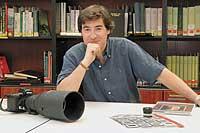
The original idea was that of Dr. Manuel Peinado, professor of long arms at the University of Alcalá. Fortunately, many books are published here, and I was up to the coconut with the thesis and drawing. When people paid me the drawings with bottles of whiskey I decided to stop drawing.
But then a scientific illustration service was needed at the university. They took the idea seriously and organized the opposition. They came up with the idea: the coming external researchers value it very positively.
To what extent is your department productive?A group like ours has many advantages, we can spend hours talking about them. The success of a university, in part, is given by the impact index of those who publish, and articles need images. Articles, conferences, classes, presentations at congresses, etc. Spending the money spent on research, is it worth taking care of the quality of the images used to present the results? The fact that he is the researcher himself does not make much sense: he loses time for research, needs more time than we do and the result of our work is much better than that of the researcher.
A good presentation can model worse results and, although the results are good, poor presentation can cause serious damage. These arguments justify our work. However, you can calculate the price of this work done at the university itself by external professionals. This calculation was made once and it was concluded that every month we saved 6,400 euros.
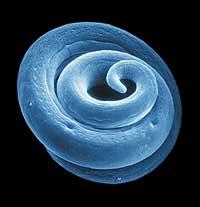
Surprisingly, we are two people to serve the entire university. We've also had fellows, but in December they cut our budget and we're pretty angry.
Which scientific fields are the ones that do the most work?The first are biology researchers. Last year I did a study and we saw that the departments of Plant Biology, Ecology, Geology and Genetics accounted for 40% of the demand. He is followed by medicine, pharmacy and other departments, followed by university companies and hospitals in Alcalá and Guadalajara.
People are very satisfied with the work we do and always ask for something more. However, sometimes we believe that they do not value our work well, some believe it is our obligation to strive to the fullest. I don't doubt it, but there is a big difference between working and getting a good product that combines science and art.
The success of our work is to be as excited as the first day, not bourgeois with age. You have to enjoy the work as if it were a game, not as a burden. I have to recognize that I am a child, and I like it to be so, because so my curiosity survives. People don't stop playing because they age; they get old because they don't play.
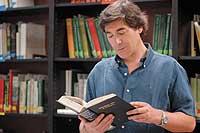
One of the characteristics of our work is that we have to do everything. This makes work attractive.
The truth is that we have a privacy clause, especially for external customers, so I can not give you much detail. Anyway, I can say that we have done some work for the police. On the other hand, on one occasion we made a copy of a book brought from abroad in the National Library. We do the work in 24 hours. Then that book had to be given to Aznar to take him on a dictator's visit. In the end, for political reasons, he did not make that visit (and, incidentally, we have not yet been paid that work). We have also taken photographs of the dead, hospital patients, the most recent compounds with black light, special photographs with lasers, etc.
Why are the photographic material selected?When we have to take a picture of something, we have to choose the right equipment. In general, we must choose optics, film and especially the type of lighting. Recently we had to photograph some old letters carved in stone. The stone was eroded and the letters were barely visible. In these cases we use the light point provided by the optical fiber, very close to the surface and parallel to the rock. The detail of the lyrics was spectacular. We can expand the contrast of this photo with the Photoshop program and correct the imbalances generated by optical fiber.
Sometimes we also have to use the macro, for example, to take pictures of Myxomycete mushrooms. These fungi are almost microscopic and easily lost with heat. Therefore, we had to use special fluorescent luminaires that gave cold light. To focus, we put a plasticine pelotite in the fungus place; then, when we had everything prepared, we had to remove the fungus from a wet chamber and make the photo in eight seconds because the fungi were twisted and the heat of the old halogen foci dried very quickly.
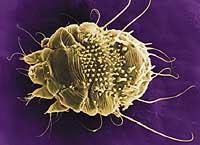
In the optical microphoto it is essential a good cut, a good assembly and a good tinting of the sample. Taking a photo with current microscopes is easy if the light and condenser are well prepared. At university we have good artists using the microtome. This is the first step and is very important as its result forces the entire process.
Electron microscopy is different. The most interesting thing for the scientific photographer is scanning microscopy, which gets very spectacular images. Also, digitally treating and adding fake colors can surprise the result.
Analog or digital? When do you choose one and when the other?Uf, this question does not have a single answer as it depends on the type of photo you want to make. For example, for an agency reporter, the most important thing is speed, so it is essential to use the digital camera. We have also increased the proportion of digital photographs, from 20% last to 85% current. In my opinion, traditional photography will be limited to a very small area, black and white artistic photography, and for about five years it will only represent 5% of the market.
Look: with a five-megapixel digital camera that almost gets into your pocket, optical supplements, a monocular the size of a sandwich, a pair of memory cards, a battery charger and a portable hard drive the size of a pocket novel, we can go around the world and bring about 30,000 photos back.
What is the philosophy of photographic treatment?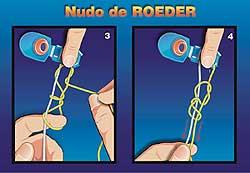
The chemical laboratory is hardly used, it is a shame. The presence of a small error in photos produced by dust or light is enough to deal with the Photoshop program. In addition, for years, little by little, with the equipment I have acquired, we can move from an analog to digital format and vice versa without any problem.
Most of the image treatment is cleaning of autoadiographies, adding contrast, color balancing, focusing (on microphotographs), recovering old photos, etc.
In these processes we try to follow an ethic so that the image is not falsified. In some cases, the researcher himself asks us to approach those ethical limits or to overcome them, in these cases I call your attention and if you want to advance we do it under your responsibility.
Now, major specialized magazines have begun to accept digital photographs. And that means the door to falsification of images has been opened. It is increasingly difficult to detect. Last year I was asked to work as an expert in a lawsuit in Barcelona. This is a case between a prestigious photographer and an editorial that collaborates in National Geographic magazine.
Are there cartoonists in your group?Of course yes, in fact, right now you are talking to a single university student (laughs). As for drawing photography, as for sophism, although it depends on the subject, in general, a good illustration is usually better than a photo. It is clearer and more didactic. They cannot yet be replaced in areas such as botany or medicine.
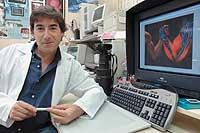
With an illustration you can enhance the most important parts, highlighting the desired elements with the color or thickness of the lines. In addition, you can get an order and an organization that you can not get in a photo.
Think about, for example, the difference between anatomical illustration or drawing a flower and photography of an open body or a series of plants. The illustration is much clearer. In the photo the elements are mixed.
Luis Monje graduated in Biology and, at the beginning of his doctoral thesis, won the Castilla-La Mancha research prize. The University created a new center for drawing and scientific photography in which Monje obtained a place. In the opposition to take the square, the jury convinced the participants of the importance of drawing and thanks to it got the position. He then abandoned the Biology thesis.
Buletina
Bidali zure helbide elektronikoa eta jaso asteroko buletina zure sarrera-ontzian











